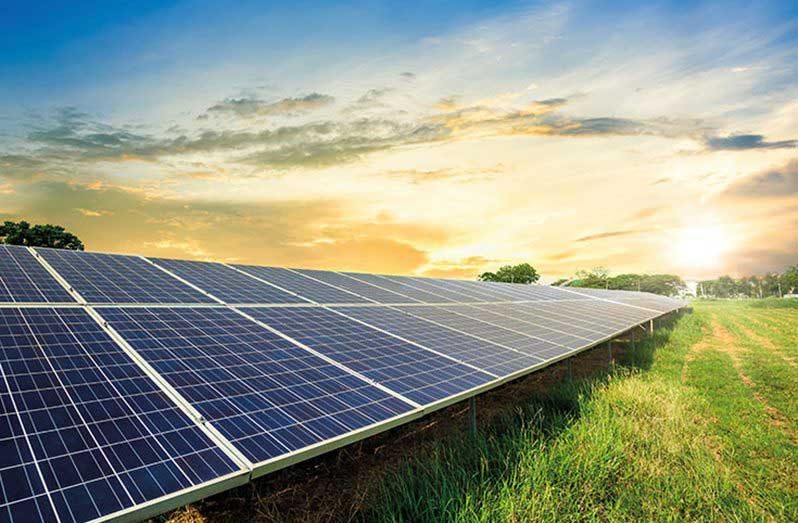–with installation of panels, push towards sustainable energy matrix
SOLAR energy installation in Guyana has grown to 173 per cent since 2020, setting the stage for the country to achieve its ambitious energy-transition goals.
This is according to President, Dr Irfaan Ali, who during a recent engagement noted that by 2030, the country’s energy consumption is projected to increase fivefold, yet the country’s greenhouse gas emissions will remain flat or even decrease.
“Guyana’s energy transition is one of the most ambitious in the world,” he said, citing the current construction of the country’s flagship gas-to-energy project that will reduce electricity costs by 50 per cent and generate 300MW of power by 2025.
He noted too that the country will soon bring on stream the largest solar farms by 2025, totalling over 30MW in Berbice, Essequibo, and Linden.
Just earlier this year, the government sealed contracts worth US$38 million aimed at acquiring an 18 megawatts peak (MWp) of solar-power capability.
The project falls under the Guyana Utility-Scale Photovoltaic Programme (GUYSOL), which is being implemented by the Guyana Power and Light (GPL) to diversify its energy source with solar farms.
The newly signed contracts are set to bolster sustainable energy infrastructure in Regions Two, Five, and Six, marking a pivotal step in the nation’s commitment to greener and more efficient energy solutions.
The project, which has a life span of 18 months, is being executed by a joint venture of SUMEC Complete Equipment and Engineering Company Limited and XJ Group Corporation (contractor). It is being funded by the Guyana/Norway partnership with an estimated investment of US$83.3M. GUYSOL is being administered by the Inter-American Development Bank (IDB).
Eight megawatts of peak power will be allocated to Onderneeming and Charity in Region Two, and 10 megawatts peak to Trafalgar and Prospect in Region Five, and Hampshire in Region Six.
It will see the installation of solar photovoltaic (PV) farms and battery-storage systems in these areas. Additionally, the procurement of an extra 15 megawatts peak is scheduled for later this year for Linden in Region 10.
GUYSOL is being financed by the Guyana REDD+ Investment Fund, which was founded under the former People’s Progressive Party/Civic (PPP/C) government led by Dr Bharrat Jagdeo.
ENHANCING CONNECTIVITY
President Ali further pointed out that investments were being made in state-of-the-art technology to enhance internet connectivity across the hinterland.
“ Almost 50 per cent on its way to the overall targets that we set. We are also bridging the digital divide by building over 200 ICT hubs, with 71 already connected to the Internet. 51 of those the high speed StarLink Internet. By the end of 2025, more than 200 ICT hubs will be complete and equipped with StarLink. This will enhance education, give access to online medical services, and create economic development opportunities.”
These investments, he noted, are all linked to the country’s Low Carbon Development Strategy (LCDS) 2030.
The Head of State pointed out that the LCDS has evolved from a vision to a global policy that has set the benchmark for driving action.
The LCDS was first launched in 2009 with the intention of mapping out the path of a new growth trajectory in a non-polluting way. The first draft of the policy had set out an initial view on how this might be done, and outlined insights on how to stimulate the creation of a low-deforestation, low-carbon, climate-resilient economy in Guyana.




.jpg)









